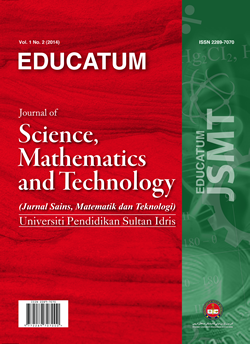Forecasting of Paracetamol Demand in UMMC Pharmacy
DOI:
https://doi.org/10.37134/ejsmt.vol8.2.2.2021Keywords:
pharmaceutical, perishable, inventory, medicine, sustainable healthcare managementAbstract
Pharmaceutical inventory management is a critical operation in healthcare centres. This is due to the fact that most pharmaceutical products are perishable. Managing the inventory of perishable items can be a complicated process as the healthcare industry needs to maintain a high level of services. In order to manage the inventory of pharmaceutical products, it is important to forecast the demand, which will enable the distribution to be planned and scheduled effectively. In this research, we focus on one fast moving medicine which is paracetamol that commonly used to treat fever and pain across all ages group of patients. Data is obtained from University Malaya Medical Centre (UMMC) for the year 2017-2020. Before applying the forecasting techniques, the data pattern needs to be identified. Among the five forecasting techniques are Additive Decomposition Method, Multiplicative Decomposition Method, Simple Exponential Smoothing and Adaptive Response Rate Exponential Smoothing. The performance of these techniques was evaluated based on four error measurements; (i) Mean Absolute Deviation, (ii) Mean Squares Error, (iii) Mean Percentage Error and Mean Absolute Percentage Error. Multiplicative Decomposition method displays the lowest values of error measurements which indicates the greatest accuracy and implies the suitability for this research. The data predicts that the demand for paracetamol will likely continue to move downwards over the next five years.
Downloads
References
Saha, E., & Ray, P. K. (2019). Modelling and analysis of inventory management systems in healthcare: A review and reflections. Computers & Industrial Engineering, 137, 106051.
Bazerghi, A. (2020). Inventory modeling for active pharmaceutical ingredient supply chains (Doctoral dissertation, Massachusetts Institute of Technology).
Chen, Y., & Chang, H. (2017). Improve the management of pharmaceutical inventory by using an IoT based information system. Int J Soc Sci Humanity, 7(8), 569-573.
Sharma, A., Kaur, J., & Singh, I. (2020). Internet of Things (IoT) in Pharmaceutical Manufacturing, Warehousing, and Supply Chain Management. SN Computer Science, 1(4), 1-10.
Krishnan, A. (2020). Advancements using IOT in Supply Chain Management of Pharmaceutical Industry. Psychology and Education Journal, 57(9), 3339-3347.
Lyons, G. (2014). Pharmaceuticals in the environment: a growing threat to our tap water and wildlife. A CHEM Trust Report.
Veras, T. B., de Paiva, A. L. R., Duarte, M. M. M. B., Napoleão, D. C., & Cabral, J. J. D. S. P. (2019). Analysis of the presence of anti-inflammatories drugs in surface water: A case study in Beberibe river-PE, Brazil. Chemosphere, 222, 961-969.
Cruz-Cruz, C., Yargeau, V., Vidaña-Perez, D., Schilmann, A., Pineda, M. A., Lobato, M., ... & Barrientos-Gutierrez, T. (2021). Opioids, stimulants, and depressant drugs in fifteen Mexican cities: a wastewater-based epidemiological study. International Journal of Drug Policy, 88, 103027.
Saxena, P., Hiwrale, I., Das, S., Shukla, V., Tyagi, L., Pal, S., ... & Dhodapkar, R. (2021). Profiling of emerging contaminants and antibiotic resistance in sewage treatment plants: an Indian perspective. Journal of Hazardous Materials, 408, 124877.
Naquin, T., Robichaux, K., Belding, C., Bergeron, S., & Boopathy, R. (2017). Presence of sulfonamide and carbapenem resistance genes in a sewage treatment plant in Southeast Louisiana, USA. International Biodeterioration & Biodegradation, 124, 10-16.
Hu, P., Guo, C., Zhang, Y., Lv, J., Zhang, Y., & Xu, J. (2019). Occurrence, distribution and risk assessment of abused drugs and their metabolites in a typical urban river in north China. Frontiers of Environmental Science & Engineering, 13(4), 1-11.
Tsolakis, N., & Srai, J. (2016). Modelling ‘Green’Paracetamol Supply Chain Operations Defined by Renewable Chemical Feedstocks in England: A System Dynamics Analysis.
Wibowo, P. (2019). Pengaruh perbedaan jumlah hidden layer dalam jaringan syaraf tiruan terhadap prediksi kebutuhan captopril dan paracetamol pada rumah sakit. Media Aplikom, 11(2).





